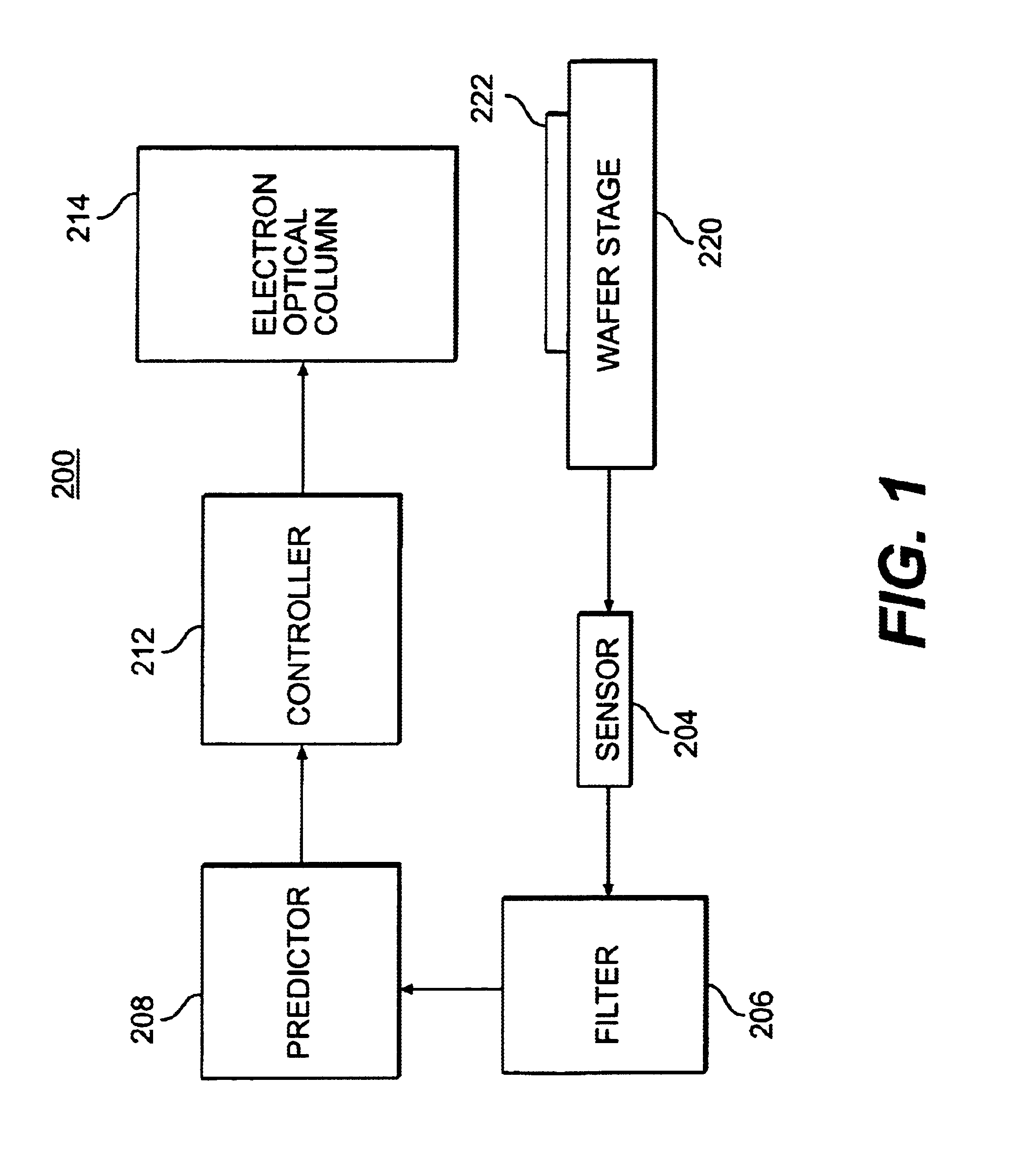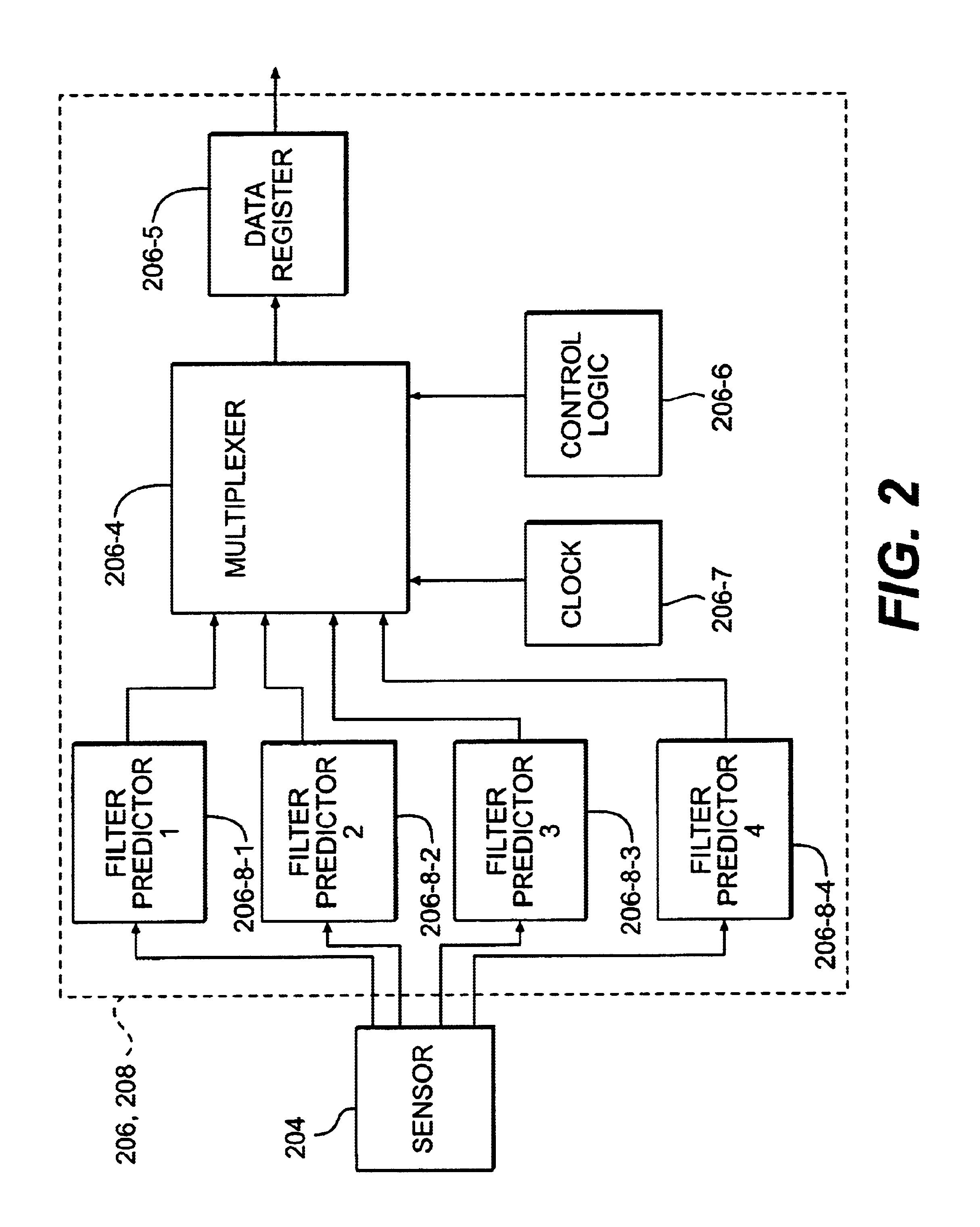Practical pseudo-asynchronous filter architecture
a filter architecture and pseudo-asynchronous technology, applied in the field of filters, can solve the problems of reducing affecting the efficiency affecting the accuracy of the data, so as to reduce the number of filters required to accommodate the data requirements of the secondary process, reduce the number of processor requirements, and avoid computationally intensive and complicated variable rate filters
- Summary
- Abstract
- Description
- Claims
- Application Information
AI Technical Summary
Benefits of technology
Problems solved by technology
Method used
Image
Examples
Embodiment Construction
[0023]FIG. 1 shows a system block diagram of an electron beam lithography system (System) 200 according to the presently preferred embodiment of the invention. System 200 includes a moving stage 220 that carries a resist-coated wafer 222 for exposure by an electron optical column 214. System 200 also includes a sensor 204 that measures the position of the wafer stage 220. The sensor 204 is coupled to a filter 206. The filter 206 is connected to a predictor 208 that in turn is connected to a controller 212. The controller 212 is connected to the electron optical column 214. The filter 206 and the predictor 208 are shown as separate units in FIG. 1; however, they may also be implemented together as a single unit. A controller (not shown) uses the output of the sensor 204 to control the position of the stage 220.
[0024]The filter 206 in the preferred embodiment of the invention is a Kalman filter; however, other filters may be used, such as a lattice filter or a finite impulse response ...
PUM
 Login to View More
Login to View More Abstract
Description
Claims
Application Information
 Login to View More
Login to View More - R&D
- Intellectual Property
- Life Sciences
- Materials
- Tech Scout
- Unparalleled Data Quality
- Higher Quality Content
- 60% Fewer Hallucinations
Browse by: Latest US Patents, China's latest patents, Technical Efficacy Thesaurus, Application Domain, Technology Topic, Popular Technical Reports.
© 2025 PatSnap. All rights reserved.Legal|Privacy policy|Modern Slavery Act Transparency Statement|Sitemap|About US| Contact US: help@patsnap.com



